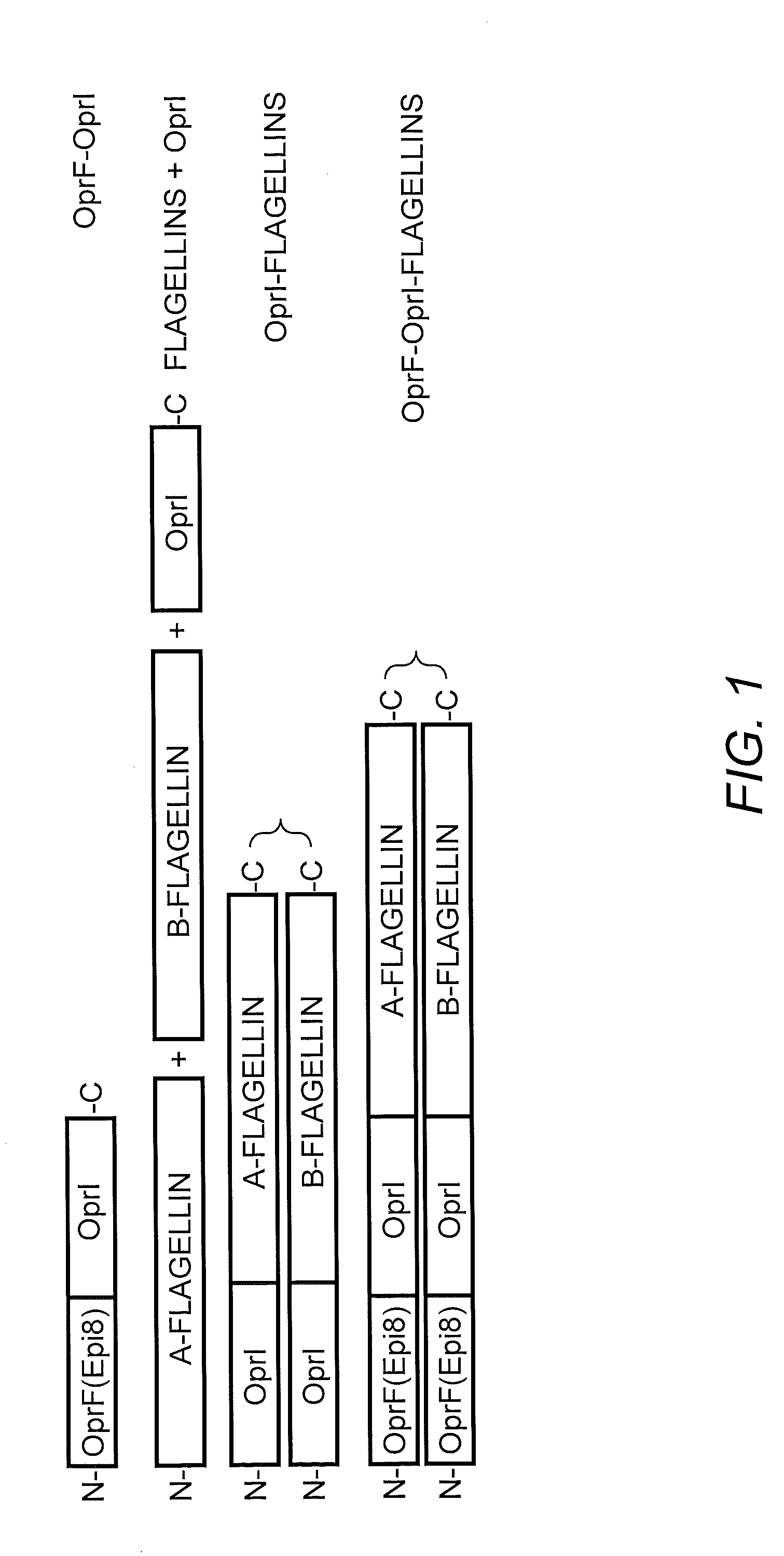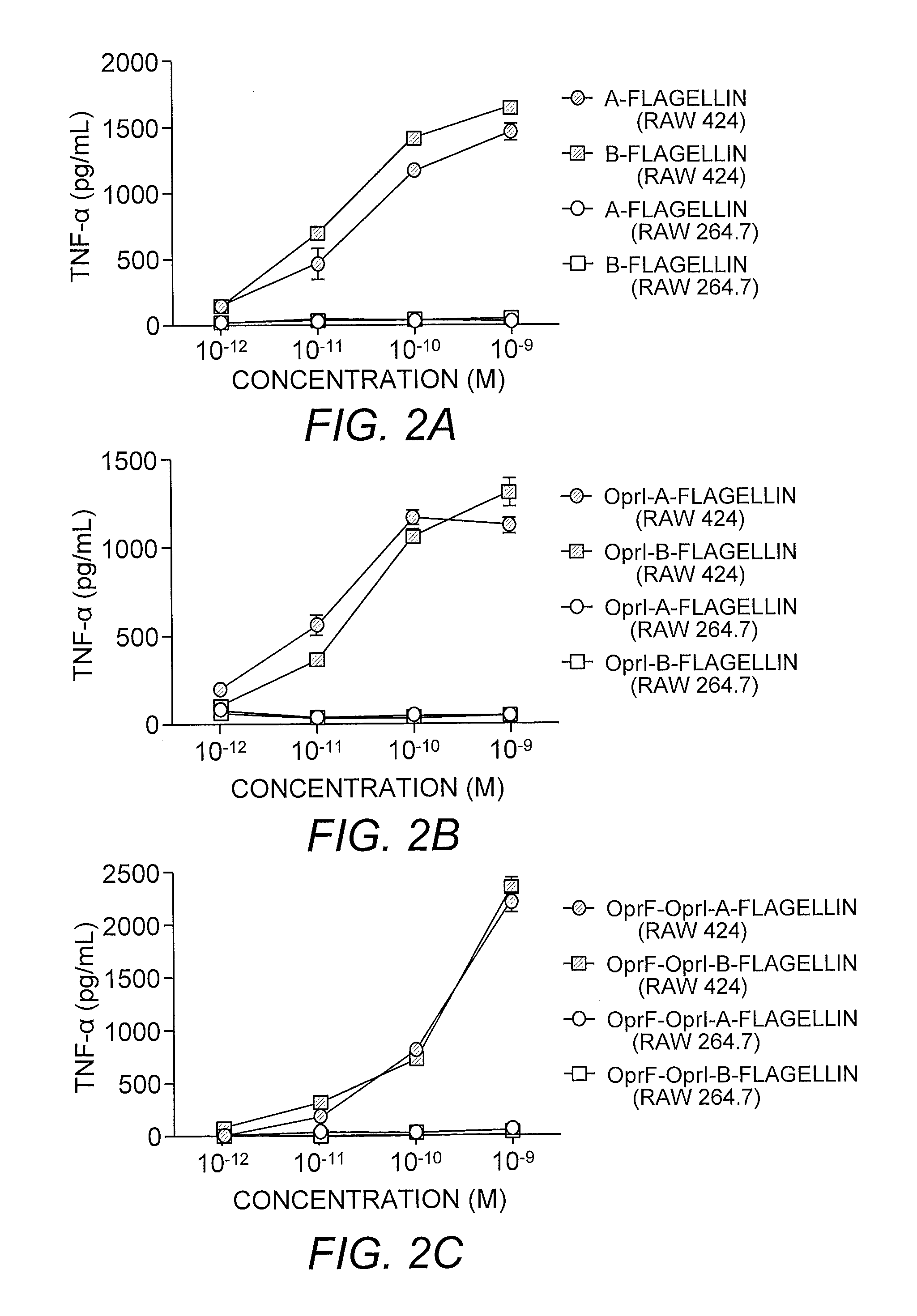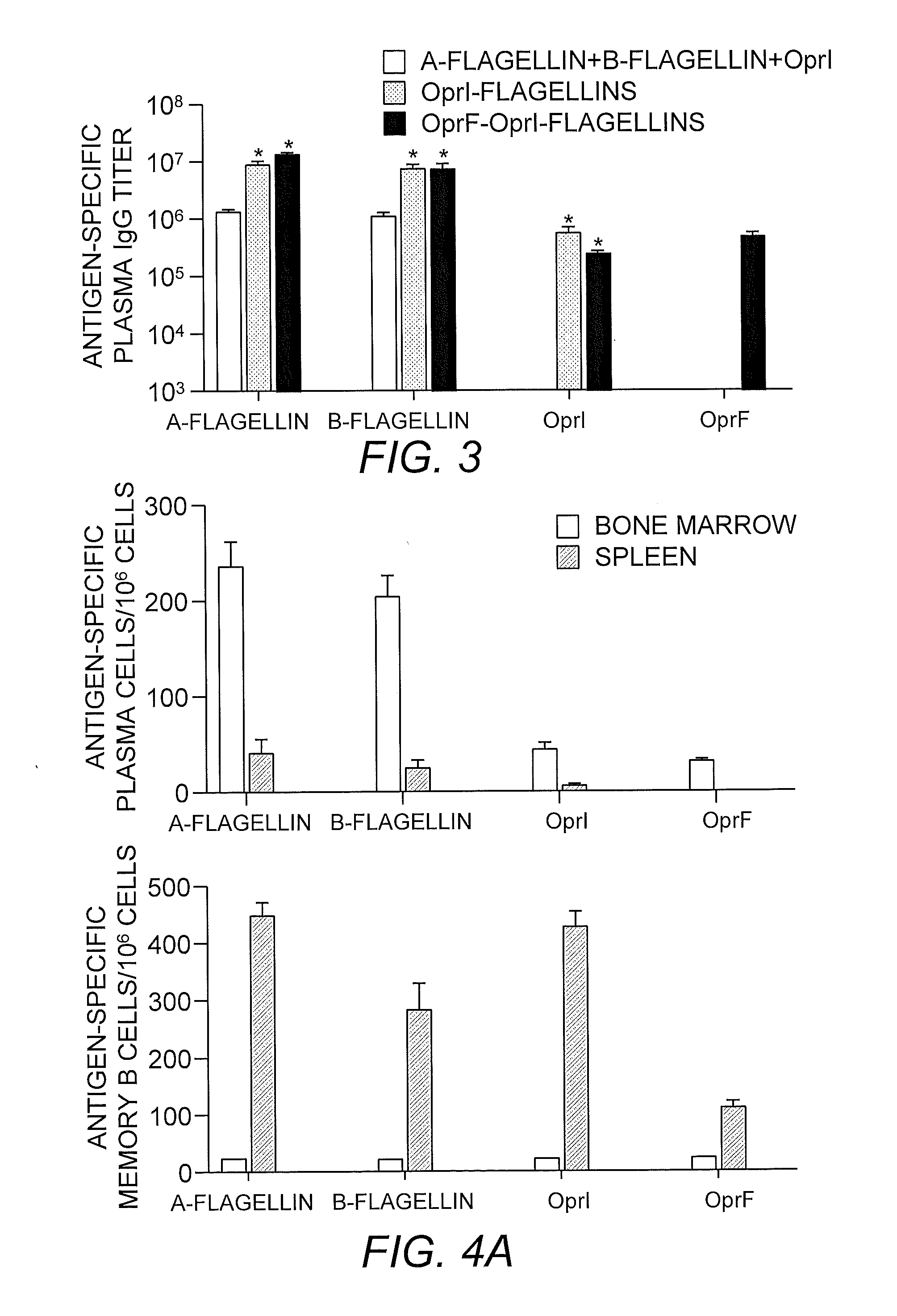Flagellin fusion proteins and use thereof to induce immune responses against pseudomonas aeruginosa
a technology of pseudomonas aeruginosa and fusion proteins, which is applied in the field of fusion proteins and use thereof to induce immune responses against pseudomonas aeruginosa, can solve the problems of limited human trials, disruption of ion transport, and dehydration of mucosal surfaces, and achieves enhanced immune response, high functional activity, and robust memory response
- Summary
- Abstract
- Description
- Claims
- Application Information
AI Technical Summary
Benefits of technology
Problems solved by technology
Method used
Image
Examples
example 1
Materials and Methods
[0196]Strains and plasmids. Bacterial strains and plasmids used in this study are described in Table 2. Escherichia coli cultures were maintained at 37° C. in Luria-Bertaini (LB; 10 g / L tryptone, 5 g / L yeast extract, 5 g / L NaCl) broth, while P. aeruginosa was cultured in LB broth lacking NaCl (LBNS; 10 g / L tryptone, 5 g / L yeast extract). Solid media were prepared by adding 1.0-1.5% select agar (Gibco-BRL). Plasmids in E. coli were selected using media supplemented with antibiotics at the following concentrations: carbenicillin (Cb 100 μg ml-1), gentamicin (Gm 10 μg ml−1). Plasmids in P. aeruginosa were selected on media containing Cb (300 μg Gm (100 μg ml−1), and irgasan (Irg 25 μg ml−1). E. coli strain JM109 was used for all cloning procedures while E. coli SM10 was used to transfer plasmids into P. aeruginosa by bi-parental mating (Toder, (1994) Methods Enzyymol. 235:466-474). The P. aeruginosa strains used were PAO1 and its derivatives WFPA850, WFPA852, WFPA8...
example 2
Results
[0211]TLR5-specific signaling activity of P. aeruginosa A- and B-flagellin and OprF311-341-OprI-Flagellins. In order to generate antigens with flagellin as the adjuvants, we generated several constructs as shown in FIG. 1. In view of the insertion of the OprF and OprI sequences at the N-terminus of flagellin, it was important to determine if this addition would have a negative impact on the ability of each flagellin, i.e., type A or B, to signal via TLR5. To test the ability of P. aeruginosa flagellins either alone or as part of a tri-fusion with OprF and OprI (see FIG. 1), to signal via TLR5, RAW 424 (TLR5+) or RAW 264.7 (TLR5−) cells were incubated with 1pM-1 nM of each protein and production of TNF-α was assessed. Stimulation of RAW 424 cells with P. aeruginosa type A or B-flagellin, OprI-type A or B-flagellin, or OprF311-341-OprI-type A or B-flagellin resulted in a concentration-dependent increase in TNF-α (FIGS. 2A-C). In contrast, none of these proteins induced TNF-α pr...
PUM
| Property | Measurement | Unit |
|---|---|---|
| Time | aaaaa | aaaaa |
| Fraction | aaaaa | aaaaa |
| Fraction | aaaaa | aaaaa |
Abstract
Description
Claims
Application Information
 Login to View More
Login to View More - R&D
- Intellectual Property
- Life Sciences
- Materials
- Tech Scout
- Unparalleled Data Quality
- Higher Quality Content
- 60% Fewer Hallucinations
Browse by: Latest US Patents, China's latest patents, Technical Efficacy Thesaurus, Application Domain, Technology Topic, Popular Technical Reports.
© 2025 PatSnap. All rights reserved.Legal|Privacy policy|Modern Slavery Act Transparency Statement|Sitemap|About US| Contact US: help@patsnap.com



